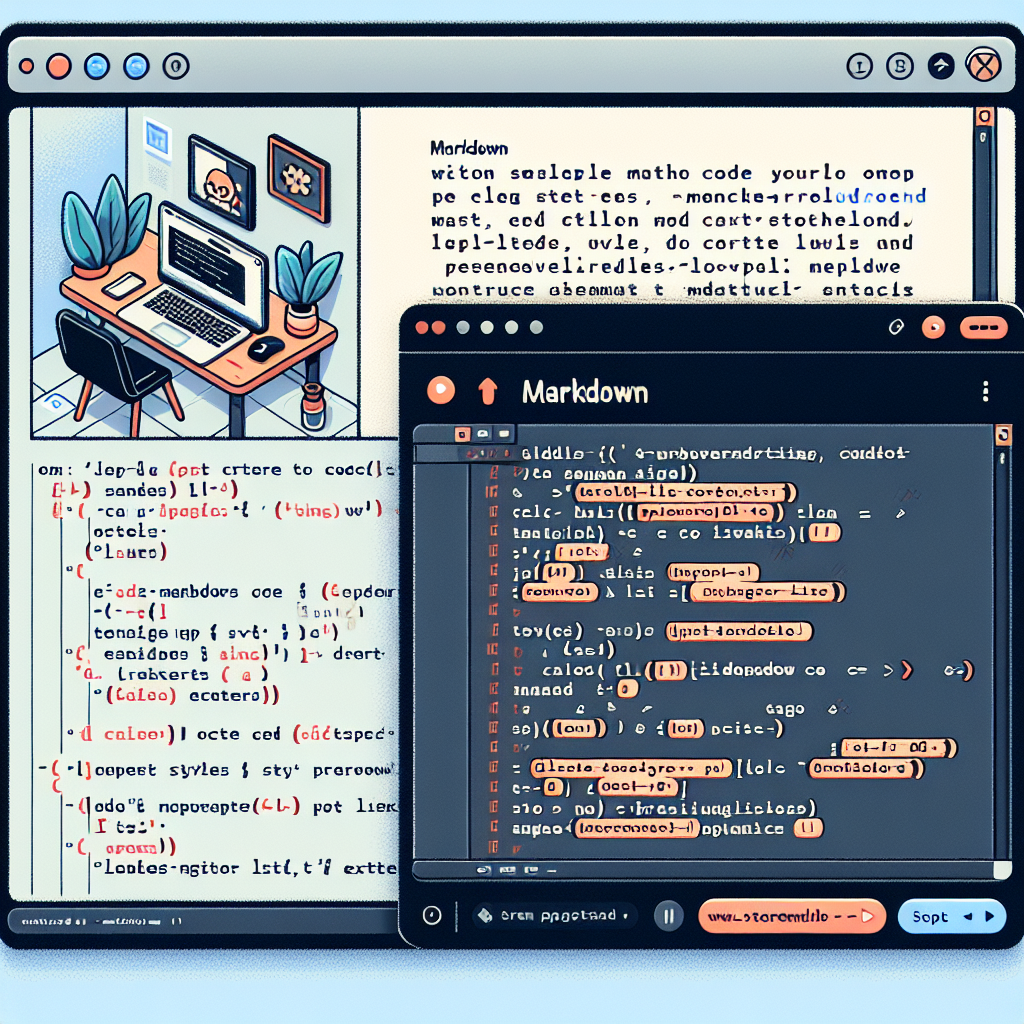Creating Interactive Web Applications with Markdown and Streamlit
Use Markdown and Streamlit for easy, interactive web apps. Enhance looks and function with simple text and Python-based development. Quick, efficient data display.

"Why struggle with Markdown formatting? Our free tools make it easy to create beautiful, professional-looking documents in seconds."
In today's digital era, data scientists and developers need to showcase their work quickly and efficiently. Markdown and Streamlit are two powerful tools that can help you create beautiful and feature-rich interactive web applications with ease. This article will explore how to combine Markdown and Streamlit and how they can enhance your project presentations.
What is Markdown?
Markdown is a lightweight markup language that allows you to write documents using an easy-to-read and easy-to-write plain text format, which can then be converted into valid XHTML (or HTML) documents. Markdown is widely popular for its simple syntax and strong readability, especially in technical writing and documentation.
What is Streamlit?
Streamlit is an open-source Python library that makes it incredibly simple to create custom web applications. Without any front-end development experience, you can quickly build data applications using Python code. Streamlit automatically turns your Python scripts into interactive web interfaces, making it ideal for data visualization, machine learning model demonstrations, and real-time data analysis.
Combining Markdown and Streamlit
Using Markdown in conjunction with Streamlit allows you to seamlessly integrate rich text content and interactive elements into your web applications. Here are some practical tips and examples to help you make the most of these two tools.
1. Using the Markdown Component
Streamlit provides an st.markdown function that allows you to embed Markdown content directly into your application. This enables you to easily add headings, lists, links, and code blocks.
import streamlit as st
st.markdown("""
# My First Streamlit App
Welcome to Streamlit! This is an example using Markdown.
- First item
- Second item
- Third item
[Visit Streamlit's Official Website](https://streamlit.io)
""")
2. Creating Interactive Documents
You can use Markdown to write the application's documentation and then control the content of the document through Streamlit's interactive components, such as sliders, select boxes, and buttons.
import streamlit as st
st.title("Interactive Markdown Document")
option = st.selectbox(
'Choose an option',
('Option A', 'Option B', 'Option C'))
st.markdown(f"""
You selected: {option}
This is a dynamically updated Markdown document.
""")
3. Combining Data Visualization
Streamlit supports various data visualization libraries, such as Matplotlib, Plotly, and Altair. You can reference these charts within Markdown text to provide users with a rich visual experience.
import streamlit as st
import matplotlib.pyplot as plt
import numpy as np
st.markdown("""
## Data Visualization Example
Below is a simple chart generated using Matplotlib.
""")
data = np.random.randn(20, 3)
fig, ax = plt.subplots()
ax.plot(data)
st.pyplot(fig)
Conclusion
The combination of Markdown and Streamlit provides developers with a powerful toolkit for creating both aesthetically pleasing and functional web applications. Whether you are a data scientist, researcher, or developer, mastering these two tools will greatly enhance your productivity and project presentation capabilities. Start experimenting with Markdown and Streamlit in your next project and experience the convenience and fun they bring!
Through this article, we hope you can understand how to effectively use Markdown and Streamlit to create interactive web applications. Remember to ensure that the keywords "Markdown" and "Streamlit" are naturally integrated into the article during SEO optimization to improve search engine rankings.



Comments ()